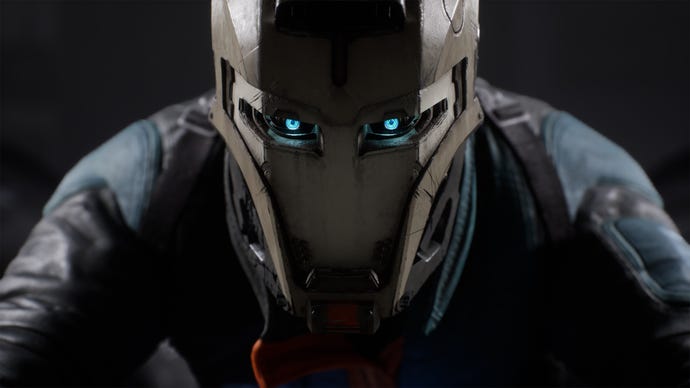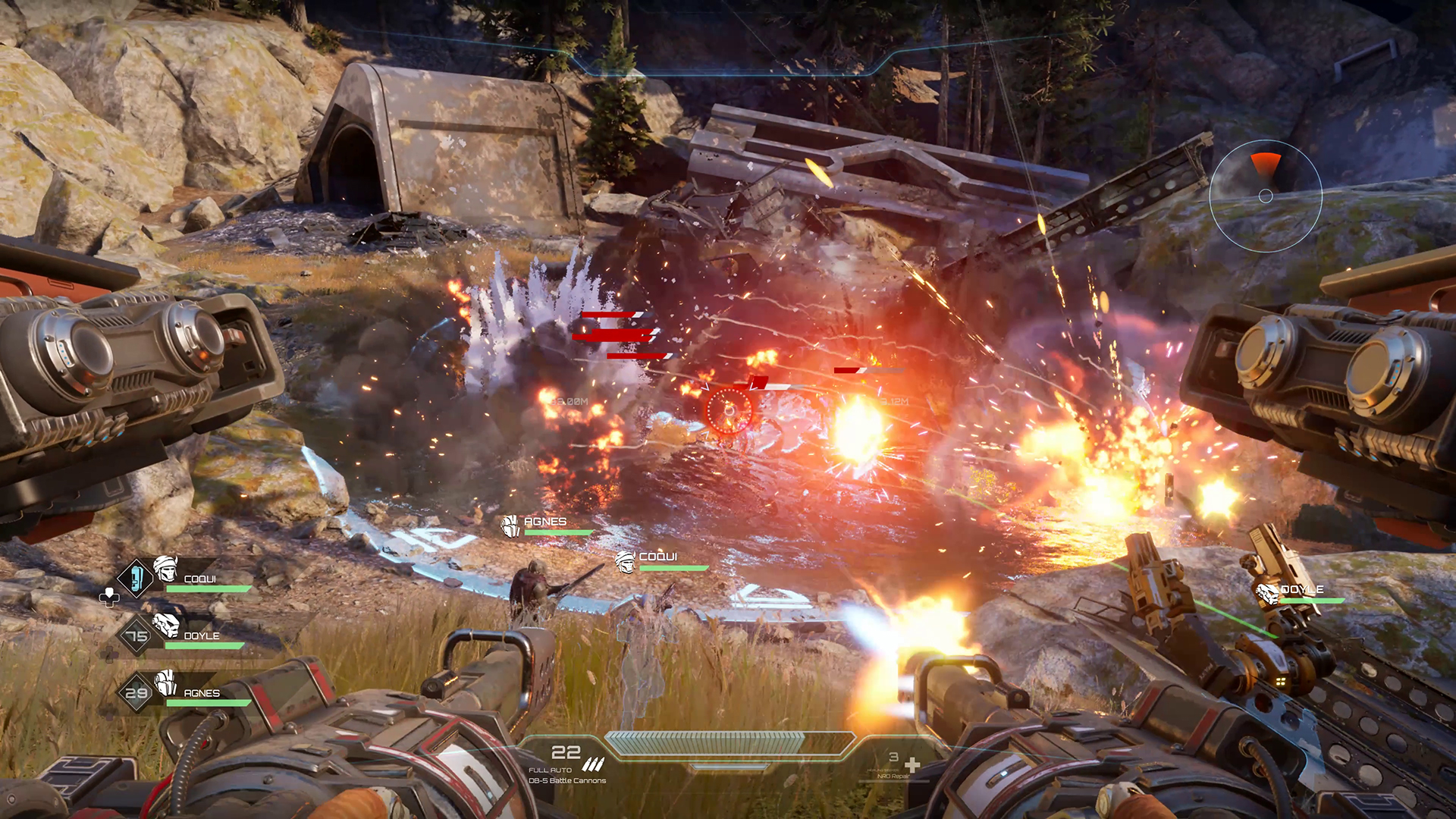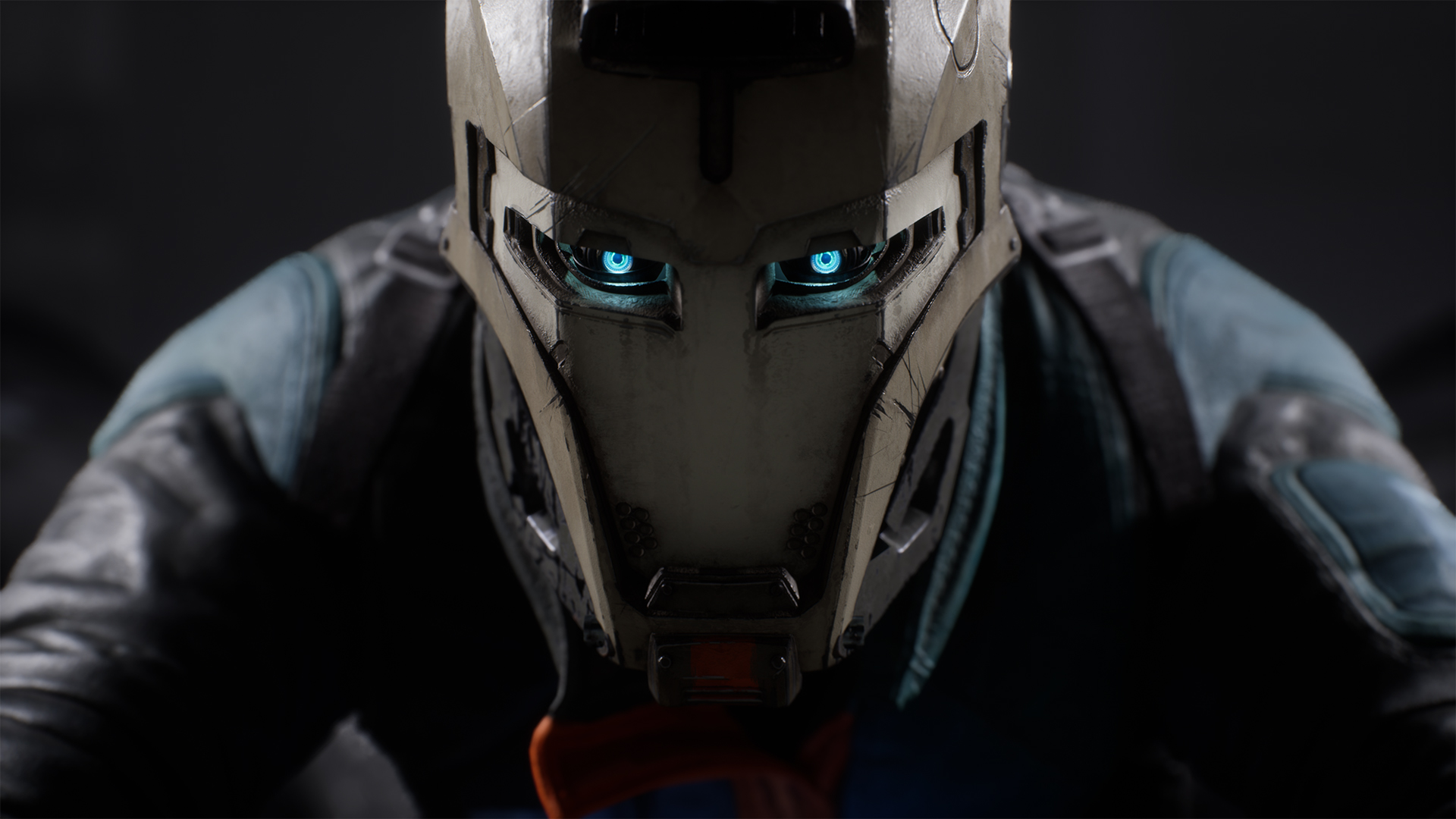Disintegration hands-on: real-time strategy and shooter collide - and somehow, it works
Disintegration is the new first-person shooter from the co-creator of Halo - but it's nothing like the image that description conjures up.
From a marketing perspective it obviously makes sense to play up the connection to Halo - Disintegration's creation has been led by Marcus Lehto, a man absolutely key in establishing Halo, a franchise people recognize with clout that's an ideal piggyback for the launch of a new series - but the truth is the game has little in common with the adventures of Spartan 117.
In fact, the closest comparison point I could think of for Disintegration is Brutal Legend - an action game that at a certain point takes a surprising, hard turn and becomes part real-time strategy. Unlike Brutal Legend, Disintegration is almost a strategy game first - to the point where Lehto and his team built a strictly RTS prototype first.
The player character sits atop a trusty steed, a gravity-defying hoverbike. In real terms this makes you a lot chunkier than an individual, and gives you full freedom of movement. The bike can fly to a certain height, can dash from side to side to dodge, boost and so on. Below on the battlefield you'll have a few minions that can be ordered around with simple commands - and to win, you'll need to make solid use of both your individual abilities and those of your companions below.
While there is that Brutal Legend comparison, Disintegration is plainly trying something all-new, and a lot has gone into making this feel natural. In this demo I got to play two rounds of multiplayer. While I at first fumbled with the concept of controlling both my character and the squad at the same time, the controls are remarkably simple, with pretty standard shooter controls augmented to fit this experience.
The squadmates you have are AI-controlled at their core, but you can order them to specific spots, to focus fire on a specific enemy with a single button press. You can also trigger unique abilities, which include attacks, buffs and debuffs or even healing, with a jab at a direction on the D-Pad.
The challenge I faced in getting to grips with Disintegration was nothing to do with the controls, in fact - they're well-designed, only fiddly in the unfamiliar way that first using analogue sticks was fiddly back in the Nineties. Rather, the challenge comes in learning to compartmentalize your mental processes - you're now micromanaging a squad as well as worrying about a player character unit, and that's an interesting dynamic.
Even by my second match it was beginning to click, however, with bumbling, uncertain targeting and execution of my squad's abilities swapped for slicker, faster commanding. With a bit of practice, people will probably be able to order the squad around without stopping shooting at all.
While Disintegration has a full single-player campaign with a deep lore that was the first thing developed, the demo for this first hands-on was a five-on-five multiplayer match. Each player launches in with a hoverbike-riding character and a squad of two to four minions. A basic capture the flag affair, this mode actually turned out to be an ideal vehicle for demonstrating how the strategy layer really sets this game apart.
For a start, you can order your squad and split apart from them a bit if necessary. This means a squad could be used to distract while you use the speed of your bike to scoot around to flank somebody. The bike-riding protagonist characters can't interact with the flags either, so all you can do is order one of your squaddies to pick up and carry it back to the win-point. All the strategy of capture the flag is present otherwise but it's amplified; there may only be ten real players in the match, but there'll be thirty-plus characters in battle when all are counted. It gets hectic, and in a good way.
This simplistic strategy layer works, and in a multiplayer environment it quickly escalates to not be so simple at all. Everything is further complicated by the fact that for multiplayer there are various classes of protagonist each with their own unique load-out of squad members and abilities - so there's a strong foundation for an interesting meta there, too. Already I can see this game fostering a strong competitive community.
The only major criticism I could level at this early hands-on is something that one might get used to - the floaty nature of the bike. As a hovering vehicle it doesn't have any tactile feedback from the ground, and so moving around even in the heat of battle often feels a bit like you're lazily drifting and like there's a lack of feedback.
Disintegration is a difficult game to describe because there's nothing else quite like it, at least that I can think of. At times, dashing about and looming over the battlefield on my bike while smaller units skirmish below brought to mind Titanfall, while the manner in which the squads move about with you and hassle on your behalf feels a touch MOBA. When you end up in a one-on-one showdown with another player, the dance between the bulky levitating bikes begins to resemble a spacefaring dogfight. And then there's the Halo influence - in shooting, in sticky grenades, in enigmatic, masked protagonists.
A video game doing something truly new across the board is pretty rare, and so Disintegration automatically deserves some credit. What it deserves more credit for, however, is finding a way to make this new formula work. This first demo is plainly early, but it's a very promising proof of concept indeed.




